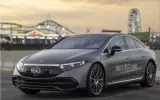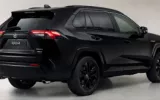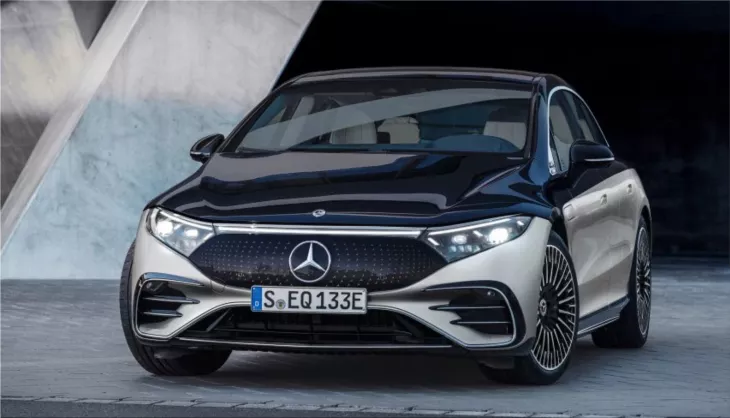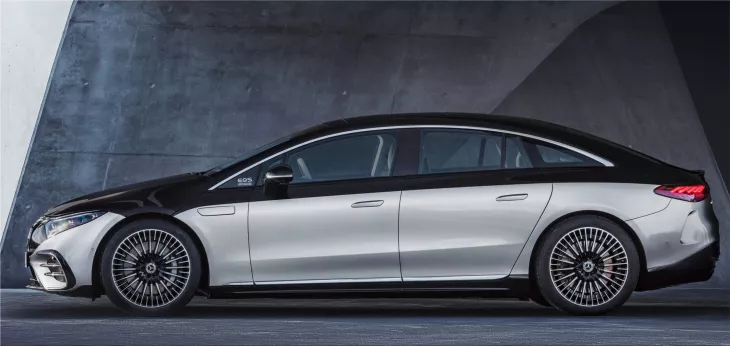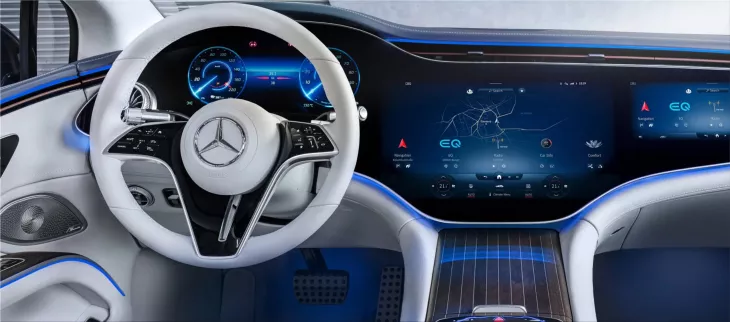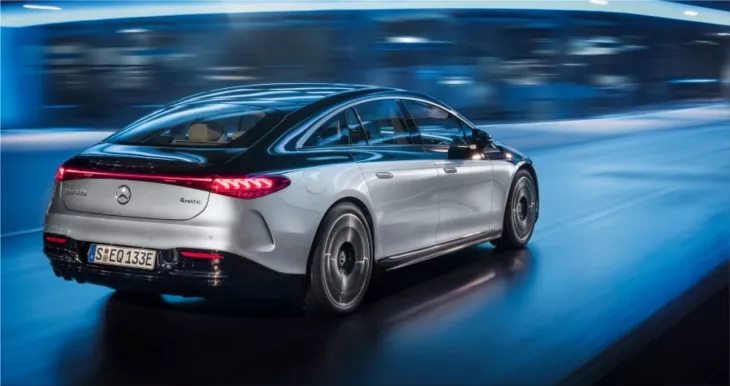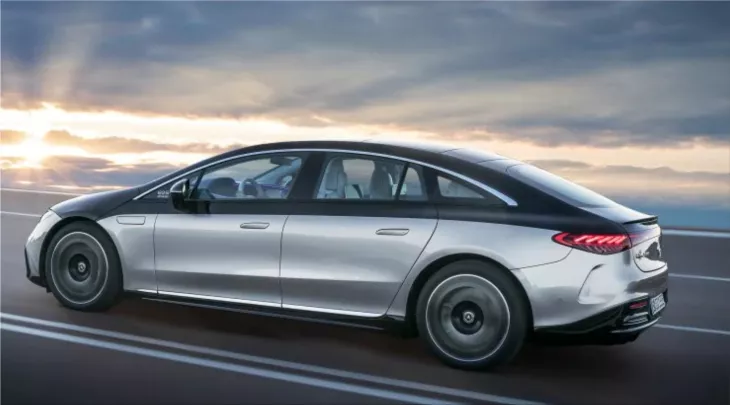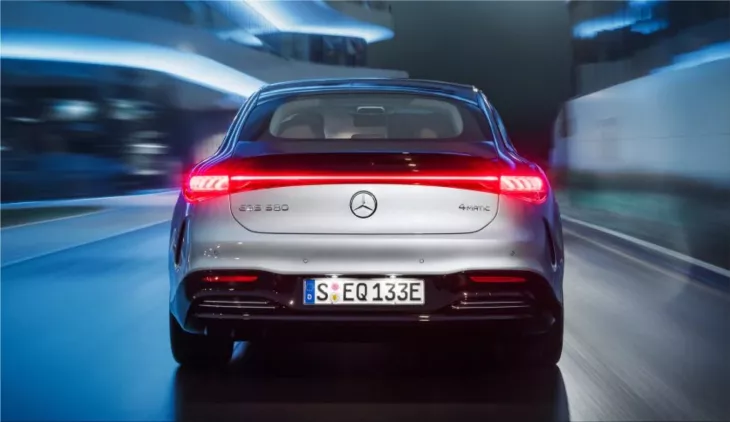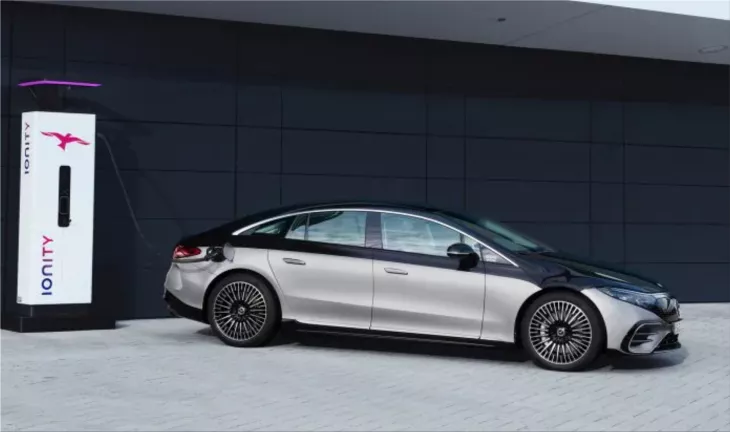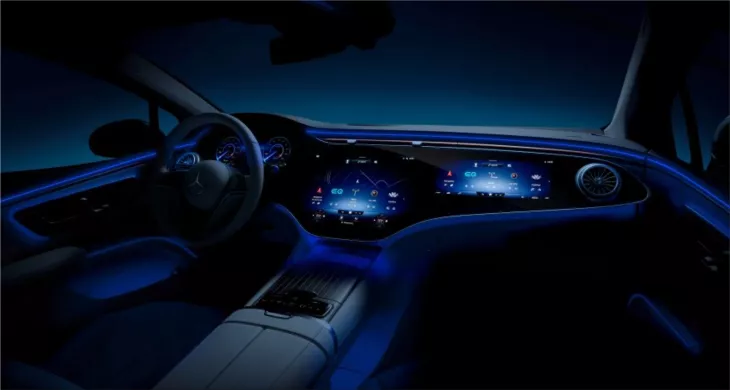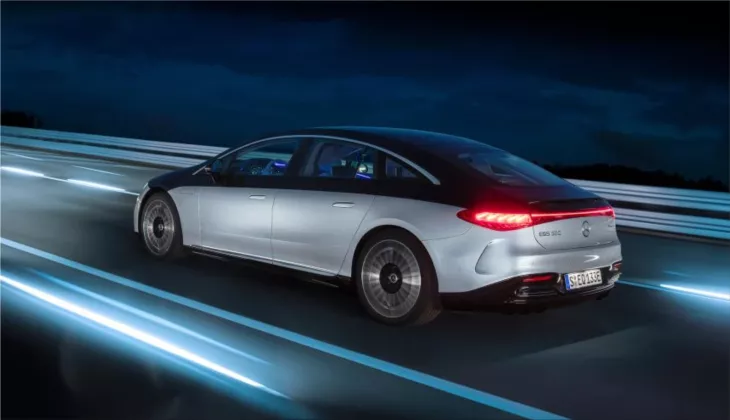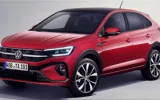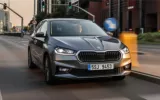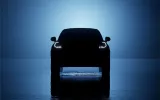The EQS is Mercedes-first EQ's premium saloon with a battery-electric powertrain. Mercedes-Benz-EQ has set new benchmarks in this market area with the debut of this vehicle. The EQS is also the first model for premium and high-end electric cars built on a modular architecture. With a captivating blend of technology, design, usefulness, and connectivity, the EQS enthralls its driver and passengers. The Mercedes-Benz EQS 450+ with 245 kW and the EQS 580 4MATIC with 385 kW are the first versions to hit the market.
Mercedes-Benz is working hard to offer a complete fleet of new CO2-neutral automobiles in less than 20 years as part of its strategic Ambition 2039 campaign. Until 2030, more than half of the company's vehicles will be electric-powered, including both pure electric automobiles and plug-in hybrid variants. Mercedes-Benz is already planning for the future in a variety of industries. This is mirrored in the new EQS architecture, which ensures long-term viability. In addition, vehicles are manufactured with a CO 2 neutral balance and materials that assist preserve natural resources, such as recycled yarn carpets. Mercedes-strategy Benz's spans the entire value creation cycle, from research and development through manufacturing. In addition, Mercedes-Benz AG has submitted its climate protection goals to the Science-Based Targets Initiative for review.
The team of aerodynamic specialists set a new world record with a coefficient of resistance cx of 0.20 after combining a specific design for an electric vehicle - what the designers call 'Purpose-Design' - with a methodical refinement of the details and close collaboration with the designers. The EQS is now the world's most aerodynamic mass-produced vehicle. The benefits are clear, particularly in terms of autonomy. Acoustic comfort is another area where the EQS stands out as one of the greatest in the world. The very low level of driving noise contributes significantly to this aerodynamic performance.
In the chapter on energy recovery, the Mercedes-Benz EQS stands out. The maximum deceleration capacity in the D Auto recovery program is 5 m / s2, although only 3 m / s2 can be accomplished through recovery (the remaining 2 m / s2 is acquired by using the service brake). Without hitting the brake pedal, the car can be decelerated to a stop in this manner. The range and high electrical energy recovery power are further advantages of the chosen recovery approach (up to 290 kW). The car will also slow down if it detects vehicles approaching from behind until it comes to a complete stop, such as at a red light. With the help of the ECO assistant, intelligent recovery is optimized based on the situation. It has the ability to intervene in advance, taking into account external circumstances such as traffic and topography.
With a maximum range of up to 780 kilometers and a power output of up to 385 kW, the Mercedes-Benz EQS completely meets the demands of a modern saloon in the S-Class market. Later on, a high-performance variant with a power output of up to 560 kW is envisioned. On the back axle of all EQS models is an electric powertrain (eATS). On the front axle of the 4MATIC models, there is an extra eATS.
The Mercedes-Benz EQS electric car is the first of a new series of high-performance batteries with a significantly higher energy density. Over-the-Air (OTA) technology is used by the company's own battery management software to enable over-the-air upgrades. This ensures that energy management software is up to date for the vehicle's life cycle duration. The proportion of cobalt in the cathodes has been lowered to 10% in the chemical composition of the cells.
The Mercedes-Benz EQS battery may be charged at DC fast-charging stations with up to 200 kW of electricity. As a result, 15 minutes is sufficient to obtain the electrical energy required to go another 300 kilometers (according to the WLTP cycle). The Mercedes-Benz EQS may also be charged using the onboard AC charger, which has a charging power of up to 22 kW and can be used at home or public charging stations. The EQS will also enable bi-directional charging in Japan, allowing electricity to flow in both directions. Innovative charging routines, which can be started automatically based on location, are also included, as are features that help reduce battery stress when charging.
Electric Intelligence-enabled navigation technology considers various criteria to determine the quickest and most pleasant route to the destination, including breaks to recharge the battery and responds dynamically to events such as a hold or changes in driving style. The MBUX (Mercedes-Benz User Experience) infotainment system now shows signals such as whether the current battery capacity is sufficient to return to the starting point without charging the battery, which is new to the EQS. Priority is given to charging stations added manually by the driver and located along the route when determining the itinerary. It's also possible to turn off the system's suggestions for charging stations. The program calculates the load's expected costs at each stop.
The new Mercedes-Benz EQS electric car is closely associated with the new S-Class, although it is built on a separate architecture platform designed specifically for electric vehicles. This completely new concept allows for the unrestricted selection of design elements based on the development goals. The patterned surfaces, minimal visible joints, and seamless transitions between the distinct volumes embody the design philosophy of emotional clarity paired with enhanced luxury.
The front features a holistic design that interacts with the so-called Black Panel unit. Innovative headlamps, a luminous band, and a deep black radiator grille (Black Panel) combine to produce a fully independent image. Additionally, anyone who chooses can emphasize the exclusivity of the Black Panel radiator grille by placing the Mercedes star in the center. To do so, select the front with a three-dimensional star design, which is offered as an option. The Mercedes-Benz pattern is based on the Daimler-Motorengesellschaft primitive star design, registered as a graphic trademark in 1911.
The Mercedes-Benz EQS electric car is the first to give the ability to retrofit fully new features in a variety of sectors via "Over-the-Air" (OTA) updates. Two unique driving programs for young drivers and service professionals, small games, and the demonstration program "The best or nothing" are among the offerings on the market debut day. Their assistance allows some EQS equipment to be customized after purchase and first configuration to meet unique customer needs. On vehicles manufactured beginning in 2022, the rear-axle steering will be able to work with the largest wheel orientation angle of 10 degrees.
The Energizing Air Control Plus system from Mercedes-Benz is a full solution for improving the air quality inside the EQS. Filtering, sensors, a visualization idea, and air treatment are all pillars of the equipment. The HEPA filter (High-Efficiency Particulate Air) filters the outside air entering the passenger compartment at a very high level, retaining fine dust, microparticles, pollen, and other contaminants. Sulfur dioxide and nitrogen oxides are reduced as a result of the activated carbon covering. The HEPA filter is certified "OFI CERT" ZG 250-1. The pre-conditioning mechanism allows for the purification of the interior air even before the passengers take their seats. MBUX reports the concentration of fine particles inside and outside the car. These figures can be found on their air quality page. The system can make recommendations if the outdoor air quality is poor.
Automatic front and rear comfort doors are available as an option on the Mercedes-Benz EQS. The door handles are first extended as the motorist approaches the vehicle. If you continue to approach, the driver's door will automatically open. MBUX also allows the driver to use the remote control function to unlock the back doors, for example, to allow the children to board when they are picked up from school.
The Mercedes-Benz EQS is a fantastic electric vehicle with up to 350 sensors depending on the configuration. Distances, speed, and acceleration are all recorded, as well as ambient light, rain severity, and temperature. These variables also identify seat occupancy and analyze driver blinks and passenger talking. The data is processed with the help of control units, which employ sophisticated algorithms to make decisions in fractions of a second. These electronic switchboards can be considered the car's brain. Because it can learn with the help of artificial intelligence (AI) approaches, the new EQS can hone its skills as it obtains new experiences.
Parking assistance systems can help the driver in maneuvers thanks to high-performance sensors that monitor the vehicle environment. The motorist can use his smartphone to park and unpark his vehicle with the help of the remote parking helper. Assume you've chosen pre-installation for the INTELLIGENT PARK PILOT. In that situation, the EQS is equipped to engage in Automated Valet Parking (AVP, SAE Level 4) in parking lots that have been specifically designed for this purpose. The EQS integrates the technology of completely automated and driverless parking and unparking in car parks when combined with the necessary optional equipment, and the relevant connect service (depending on the country).
The groundbreaking Digital Light headlamp technology (standard starting with the Advanced Plus equipment level) enables the implementation of entirely new features, such as the projection of auxiliary lines or warning symbols on the road. Cooperative Lane Change Start Display and Direction Warning / Indication if a hazard is detected by Lane Keeping Help or Blind Spot Assist are two new assist functions. Each headlamp of the Digital Light features a lighting module with three high-power LEDs and 1.3 million small mirrors that reflect and refract light. As a result, the vehicle lighting has a resolution of more than 2.6 million pixels.
In the events with heavy traffic or congestion, the Mercedes-Benz EQS equipped with the optional Drive Pilot system will be able to operate with a high degree of automation up to a speed of 60 km/h.
The MBUX Hyperscreen is a noteworthy interior feature that comes standard on the Mercedes-Benz EQS 580 4MATIC. This enormous, distorted screen spans beautifully between the two front pillars, almost from side to side of the vehicle. An optical unit is made up of three screens grouped under a cover glass. The 12.3-inch diagonal OLED display in front of the passenger seat serves as viewing and operating space for the occupant. The entertainment functions are provided only within the confines of the legal rules in effect in each country during the march. Mercedes-EQ employs an advanced, camera-based logic method to assure adherence to this constraint. MBUX adapts to its users' choices and makes tailored ideas for a variety of infotainment, comfort, and vehicle tasks using learning-capable software.
The current generation of driver assistance systems has a slew of features that make driving easier. Attention Assist, for example, now includes a warning about the dangers of micro-dreams. With the use of a camera placed into the driver's display, this function examines the driver's flicker (only in conjunction with the MBUX Hyperscreen). Furthermore, the new assistance screen on the driver's display explains how to use the driving aid systems in a simple manner.
Regardless of the vehicle's platform, the concepts of complete security, particularly crash safety, apply. The Mercedes-Benz EQS electric car, like all Mercedes-Benz automobiles, has a unique passenger compartment, regulated deformation zones, and contemporary restraint systems. PRE-SAFE is also included as standard equipment. The fact that the Mercedes-Benz EQS is built on an electric vehicle-specific design gives up additional safety configuration options. It is feasible, for example, to locate the battery on the underbelly of the vehicle, where it will be protected from potential accidents.
In addition, because there is no large rigid motor block, the structure can be better built to withstand the dynamic phenomena that occur during a frontal collision. Therefore, the Automotive Safety Technology Center conducted extra tests to check additional assumptions and conduct detailed component testing in addition to the normal crash tests. @via Mercedes-Benz.


